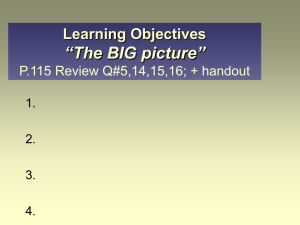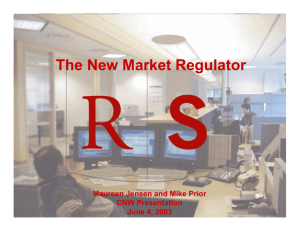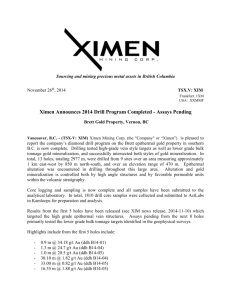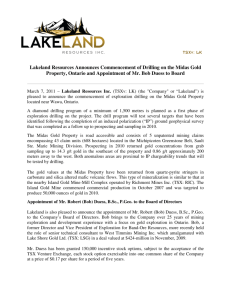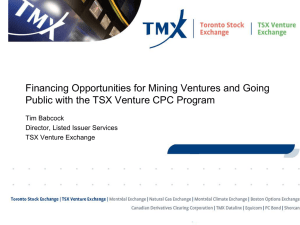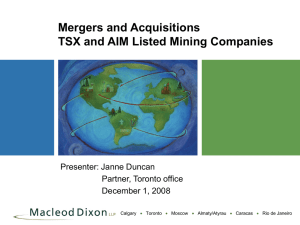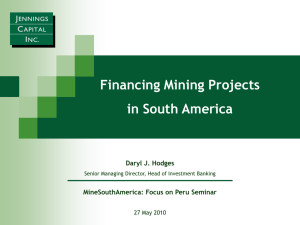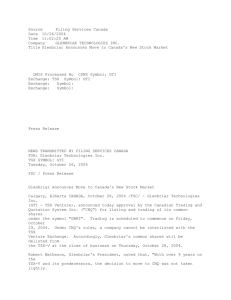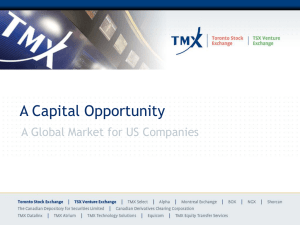eye on business The TSX and AIM—the investment landscape for
advertisement
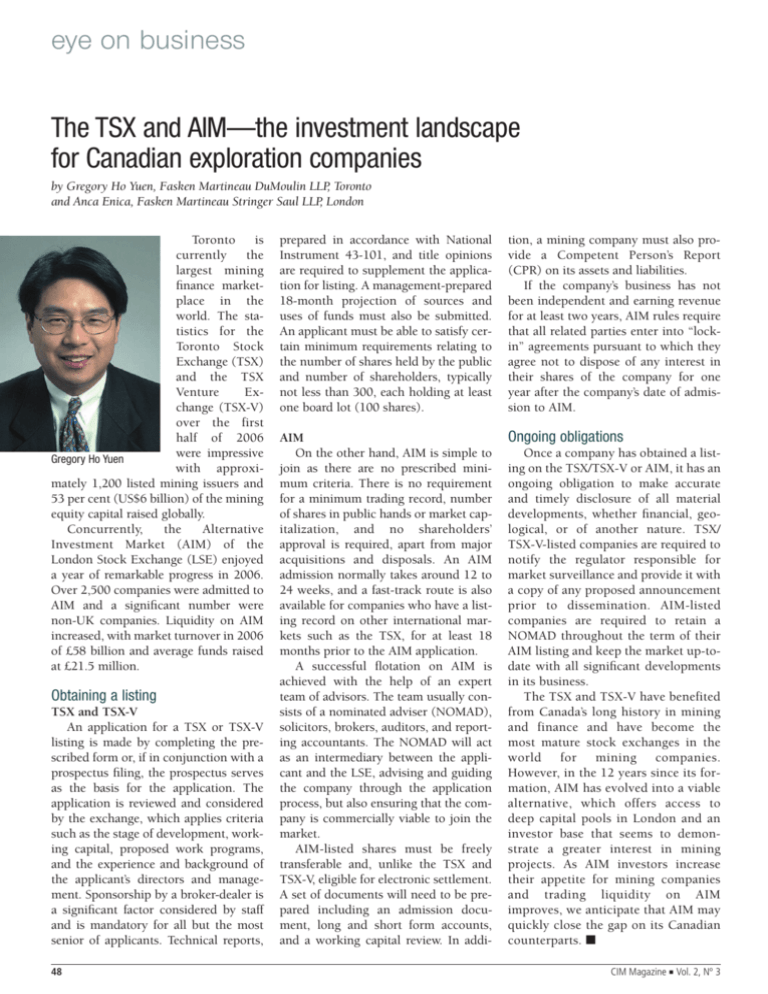
eye on business The TSX and AIM—the investment landscape for Canadian exploration companies by Gregory Ho Yuen, Fasken Martineau DuMoulin LLP, Toronto and Anca Enica, Fasken Martineau Stringer Saul LLP, London Toronto is currently the largest mining finance marketplace in the world. The statistics for the Toronto Stock Exchange (TSX) and the TSX Venture Exchange (TSX-V) over the first half of 2006 were impressive Gregory Ho Yuen with approximately 1,200 listed mining issuers and 53 per cent (US$6 billion) of the mining equity capital raised globally. Concurrently, the Alternative Investment Market (AIM) of the London Stock Exchange (LSE) enjoyed a year of remarkable progress in 2006. Over 2,500 companies were admitted to AIM and a significant number were non-UK companies. Liquidity on AIM increased, with market turnover in 2006 of £58 billion and average funds raised at £21.5 million. Obtaining a listing TSX and TSX-V An application for a TSX or TSX-V listing is made by completing the prescribed form or, if in conjunction with a prospectus filing, the prospectus serves as the basis for the application. The application is reviewed and considered by the exchange, which applies criteria such as the stage of development, working capital, proposed work programs, and the experience and background of the applicant’s directors and management. Sponsorship by a broker-dealer is a significant factor considered by staff and is mandatory for all but the most senior of applicants. Technical reports, 48 prepared in accordance with National Instrument 43-101, and title opinions are required to supplement the application for listing. A management-prepared 18-month projection of sources and uses of funds must also be submitted. An applicant must be able to satisfy certain minimum requirements relating to the number of shares held by the public and number of shareholders, typically not less than 300, each holding at least one board lot (100 shares). tion, a mining company must also provide a Competent Person’s Report (CPR) on its assets and liabilities. If the company’s business has not been independent and earning revenue for at least two years, AIM rules require that all related parties enter into “lockin” agreements pursuant to which they agree not to dispose of any interest in their shares of the company for one year after the company’s date of admission to AIM. AIM On the other hand, AIM is simple to join as there are no prescribed minimum criteria. There is no requirement for a minimum trading record, number of shares in public hands or market capitalization, and no shareholders’ approval is required, apart from major acquisitions and disposals. An AIM admission normally takes around 12 to 24 weeks, and a fast-track route is also available for companies who have a listing record on other international markets such as the TSX, for at least 18 months prior to the AIM application. A successful flotation on AIM is achieved with the help of an expert team of advisors. The team usually consists of a nominated adviser (NOMAD), solicitors, brokers, auditors, and reporting accountants. The NOMAD will act as an intermediary between the applicant and the LSE, advising and guiding the company through the application process, but also ensuring that the company is commercially viable to join the market. AIM-listed shares must be freely transferable and, unlike the TSX and TSX-V, eligible for electronic settlement. A set of documents will need to be prepared including an admission document, long and short form accounts, and a working capital review. In addi- Ongoing obligations Once a company has obtained a listing on the TSX/TSX-V or AIM, it has an ongoing obligation to make accurate and timely disclosure of all material developments, whether financial, geological, or of another nature. TSX/ TSX-V-listed companies are required to notify the regulator responsible for market surveillance and provide it with a copy of any proposed announcement prior to dissemination. AIM-listed companies are required to retain a NOMAD throughout the term of their AIM listing and keep the market up-todate with all significant developments in its business. The TSX and TSX-V have benefited from Canada’s long history in mining and finance and have become the most mature stock exchanges in the world for mining companies. However, in the 12 years since its formation, AIM has evolved into a viable alternative, which offers access to deep capital pools in London and an investor base that seems to demonstrate a greater interest in mining projects. As AIM investors increase their appetite for mining companies and trading liquidity on AIM improves, we anticipate that AIM may quickly close the gap on its Canadian counterparts. ■ CIM Magazine ■ Vol. 2, Nº 3
